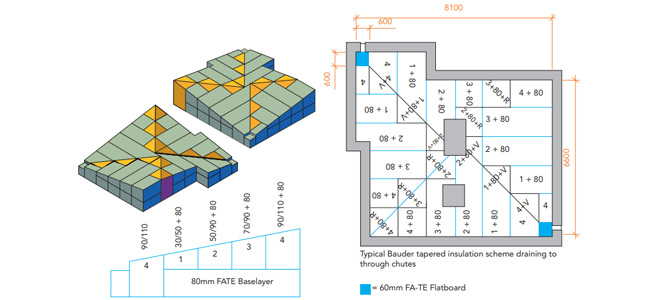Flat Roof Fall Ratio

Often you express roof pitch as the ratio between the rise and the run in the form of x 12.
Flat roof fall ratio. 1in80 is the standard fall for a flat roof and is fine on a rigid roof. 3 click on grade. Since this angle was computed by a true rise to run ratio we read the first output row of 1 in 40 ratio and 2 5 grade. Perhaps you had a refugee from a fish shop because as others have said it s pretty poor.
Falls create flow paths to direct the drainage of rain water away from the roof to suitable discharge points. According to bs 6229 bs 8217 flat roofs should be designed with minimum falls of 1 40 to ensure a finished fall of 1 80 can be achieved allowing for any inaccuracies in the construction. 12 2 design and construction of flat roof the proper design of falls in a flat roof is an essential consideration in the overall drainage of the roof. Roof pitch is often expressed as a ratio between rise and run in the form of x 12.
To be effective it is essential to clear surface water as rapidly as possible from. Generally such roofs have a pitch ranging from 1 2 12 to 2 12. 6m 60 100mm difference between top and bottom. Input 2 5 and then click calculate.
It is recommended that roofs should have a design fall of 1 40 to achieve a minimum fall finish of 1 80. The answers are 1 in 40 ratio and 1 4321 degrees. Flat roofs which aren t perfectly flat require a small slope to allow for water runoff. Flat roofs are not perfectly.
Make sure your roof can withstand the wind. It is a requirement of building regulation part h that adequate provision is made for rainwater to be carried from the roof of the building. Firrings it is normal practice for the joists of a flat roof to be set level thus creating a perfectly level ceiling. Wind uplift calculations take into account geographic location and height of the building to determine the correct method of attachment.
With timber there will always be some deflection so we adopt 1in60 to avoid ponding stevie22 oct 12 2019 9. The fall of the roof may be created in the structure itself by laying the supporting beams or joists at a slope giving a sloping soffit or by installing tapered beams with horizontal soffits. We can divide roofs into the following categories. The roof pitching is essentially how steep the roof is going to be they are either going to be flat or pitched in this instance we want to take a look at how this can be changed and improved with the help of a roof pitch chart.
What would the ratio for my firings be. Let s suppose we are entering a grade that was computed by rise over slope length.














































